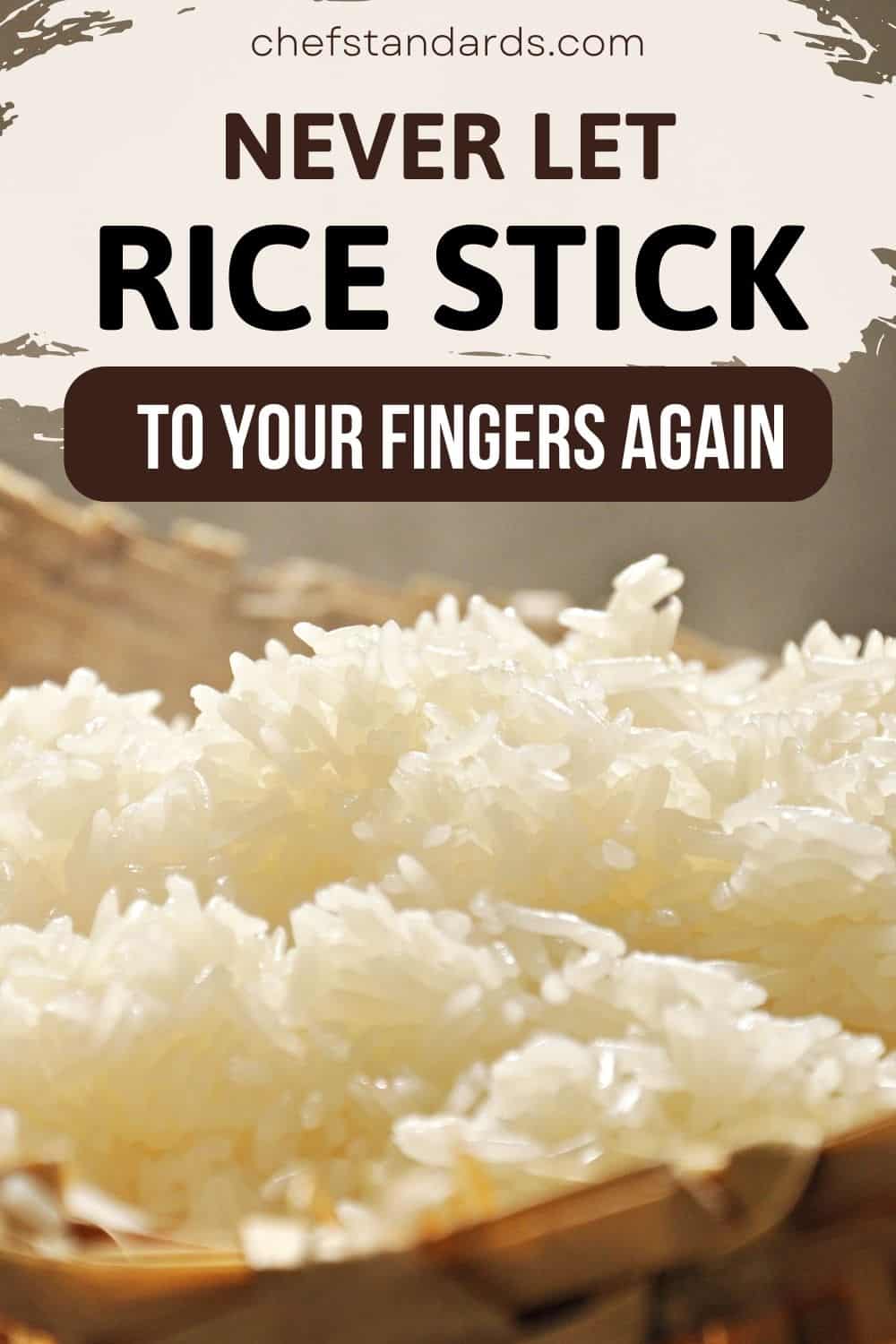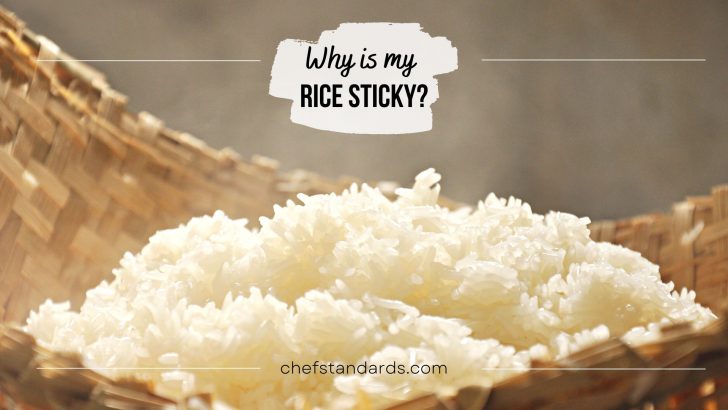Although many people here in the US think that cooking rice is an easy process where you can not make a mistake, it is not quite the case.
Just like everything else in the cooking world, things can sometimes go wrong when making your rice dish.
So, if you don’t know how to handle and cook rice properly, instead of fluff, you can end up with mushy, sticky, or clumpy rice alongside overcooked or undercooked rice.
One of the most frequently asked questions related to cooking rice is “Why is my rice sticky?” and “How to make rice fluffy and not sticky?” Of course, sticky rice happens if you don’t know how to prepare and cook rice properly.
So, in order to find out how to do that, as well as how to fix the problem of sticky rice, I suggest you continue reading.
So, let’s begin, shall we?
Why Is My Rice Sticky?
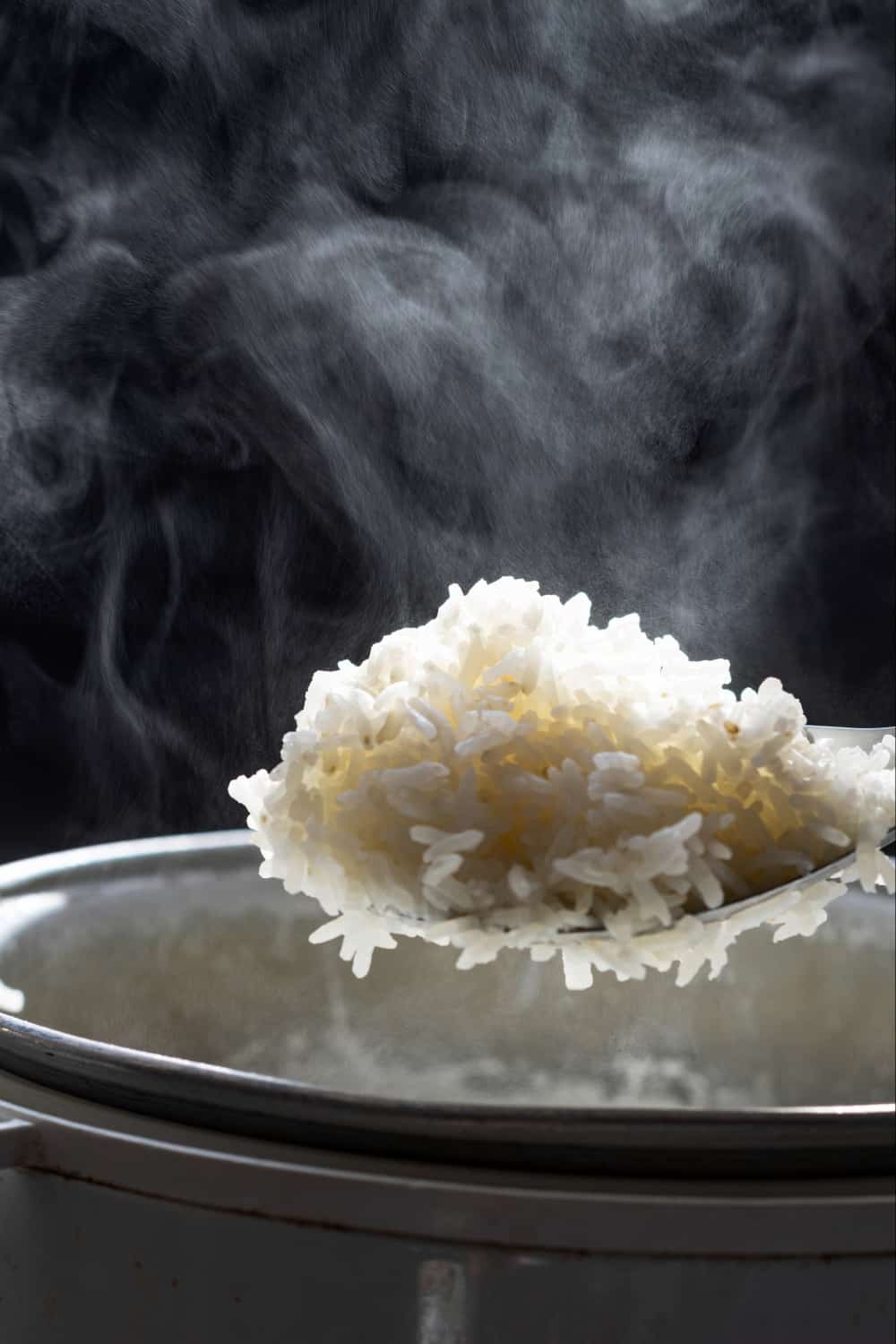
This question can not be answered in one sentence. There are various factors that influence the overall state of your rice. However, one of the most common reasons for sticky rice is loose starch that coats the grains before cooking.
Aside from that, too much water might be a problem as well. And there are also the issues of overcooking, stirring, and not letting your rice rest.
To avoid making the introduction too long, below I have listed and explained all the causes of sticky rice. Rice is one of the most eaten foods in the world so you definitely need to know these facts.
Common Reasons For Sticky Or Mushy Rice
Here are the six main causes of sticky rice that you need to be aware of. Let’s see the reasons why your rice is too sticky.
1. Not Rinsing Your Rice
One of the worst things you can do when making rice is to avoid rinsing it before the cooking process. If you think that dirt is a problem, you are on the wrong track. The main problem is loose starches that are on the grains and that make them stick to one another while cooking.
But, why do grains make excess starch? Well, when the rice is transported from the rice fields to the grocery stores and supermarkets, the grains rub against each other, producing extra starch.
And when you incorporate that starchy rice into the boiling water, it becomes very sticky. So, it is very important to rinse that rice to get rid of that annoying starch.
In order to do that properly, you just have to pour your uncooked rice into a large bowl of cold water and mix and swirl the rice around.
When the water becomes cloudy, replace that cloudy water with new water with the help of a strainer. Do that 3 times until you get rid of the starch.
After that, your rice is ready for the cooker.
2. Incorrect Ratio Of Water And Rice
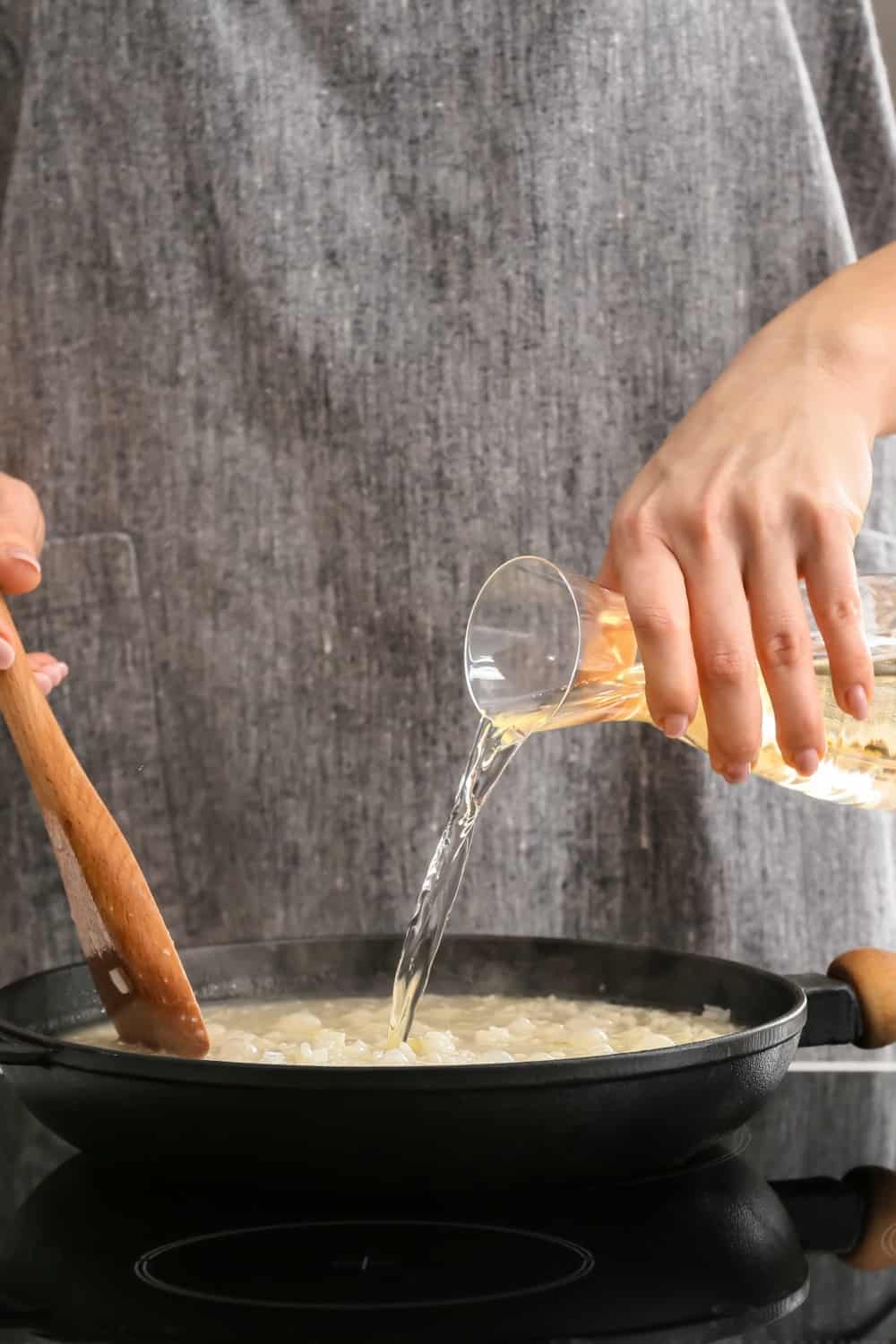
When it comes to the ratio of water and rice that you need, it is a little bit of a complicated issue. But, you will understand it, I believe.
First, you must know that the correct ratio of water and rice depends on the type of rice you are dealing with, the cooking method, and the type of equipment.
So, you can’t use the same amount of water for white rice and brown rice. Also, if you are using white rice, you must know that there are also differences in the right amount of water between different types of white rice like basmati, long grain, and short grain rice.
Aside from the type of rice, the type of cooking appliance is also very important. It is not the same thing when you cook your rice in a saucepan on the stove or in a rice cooker.
In most cases, a rice cooker has a correct limit for the amount of water, so it is easier to cook rice in that kind of kitchen appliance and avoid excess water.
On the other hand, if you cook rice in an ordinary saucepan, you must know how much water you have to use when cooking a certain type of rice.
So, in general, when it comes to the water and rice ratio, you will pour 1-1.2 cups of water on 1 cup of short-grain white rice.
On the other hand, if you are dealing with long-grain rice, you will need 1.5-2 cups of water for 1 cup of rice.
That’s the general rule of thumb. However, many home cooks tend to experiment with the ratio between water and rice until they achieve what they want.
3. Overcooking Your Rice
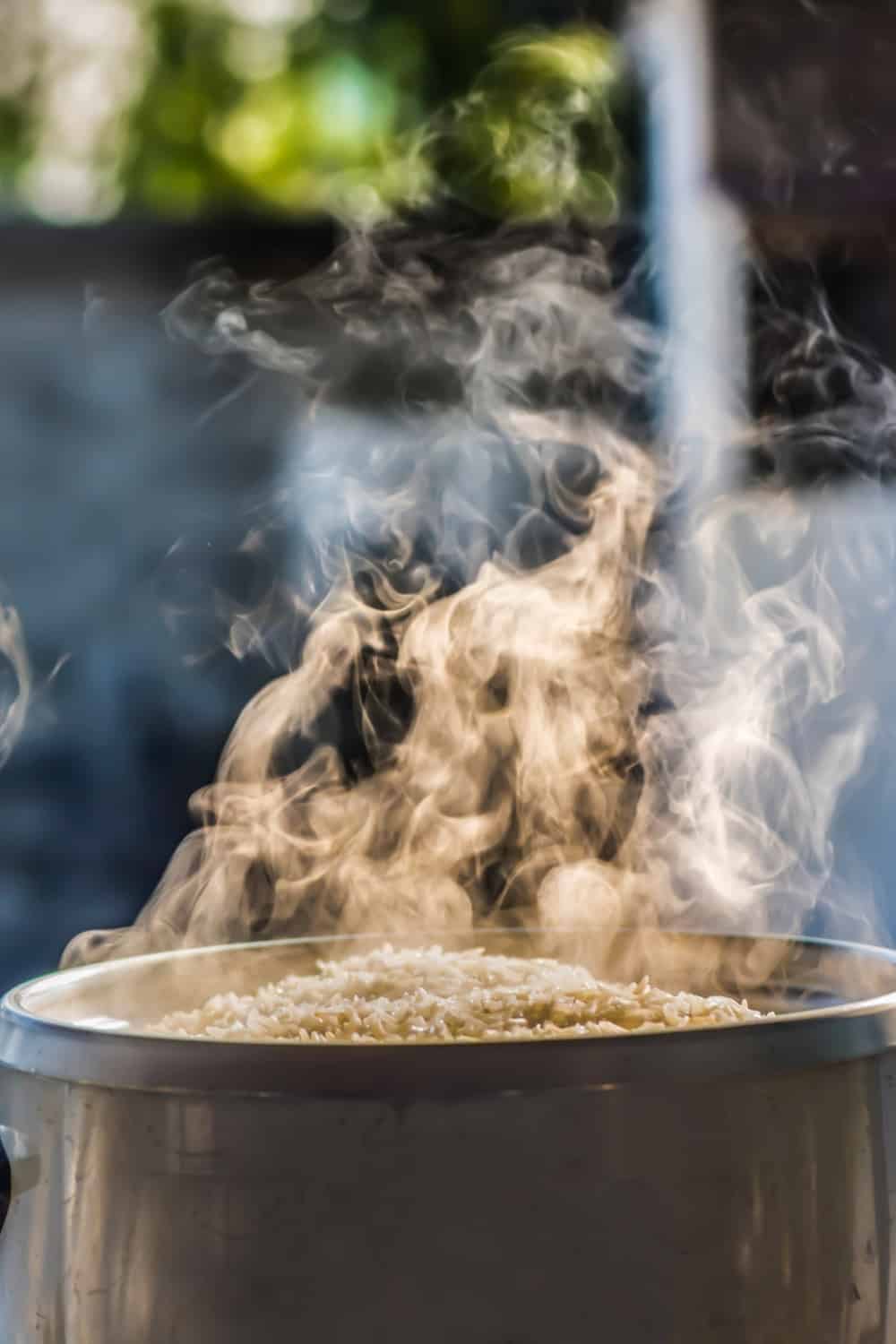
Nobody wants to eat undercooked food because it is usually hard and it can be quite harmful for your health as well. However, you must not overcook either, especially if you are dealing with any type of rice.
When you cook your rice for too long, it tends to become quite mushy. That is especially true if you have poured too much water into the rice cooker. In that case, the excess moisture will cause the grains of rice to lose their shape and break into tiny pieces.
Then, you will have one starchy and gloopy mixture, something similar to rice pudding. So, if your goal is not to make some kind of rice smoothie, I would suggest you pay attention to the cooking time because it is very important.
4. Stirring It
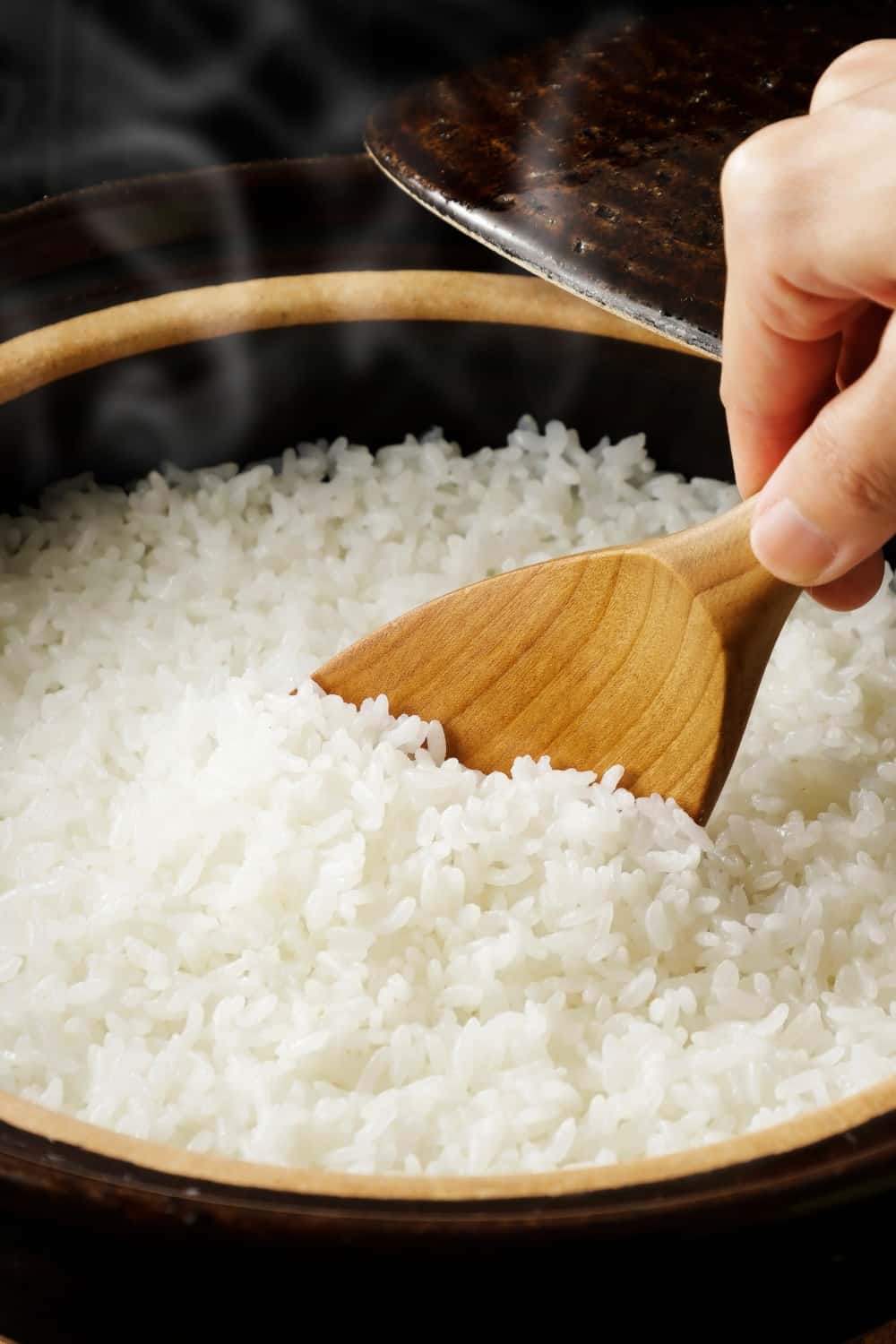
As I already emphasized above, grains of rice contain loose starches on them. Those starches multiply when the grains rub against each other, so you end up with quite starchy rice.
And when you pour that rice into the cooker filled with water, the rice will become too sticky. So, I already said that it is important to rinse your rice properly in order to avoid this.
However, even if you do that, your rice can still be starchy and consequently sticky if you stir it too much. The reason is obvious. The grains will again rub against one another, become starchy, and finally become sticky and mushy.
So, do not stir your rice if you don’t want to end up with a sticky one.
5. Lifting The Lid During The Cooking Process
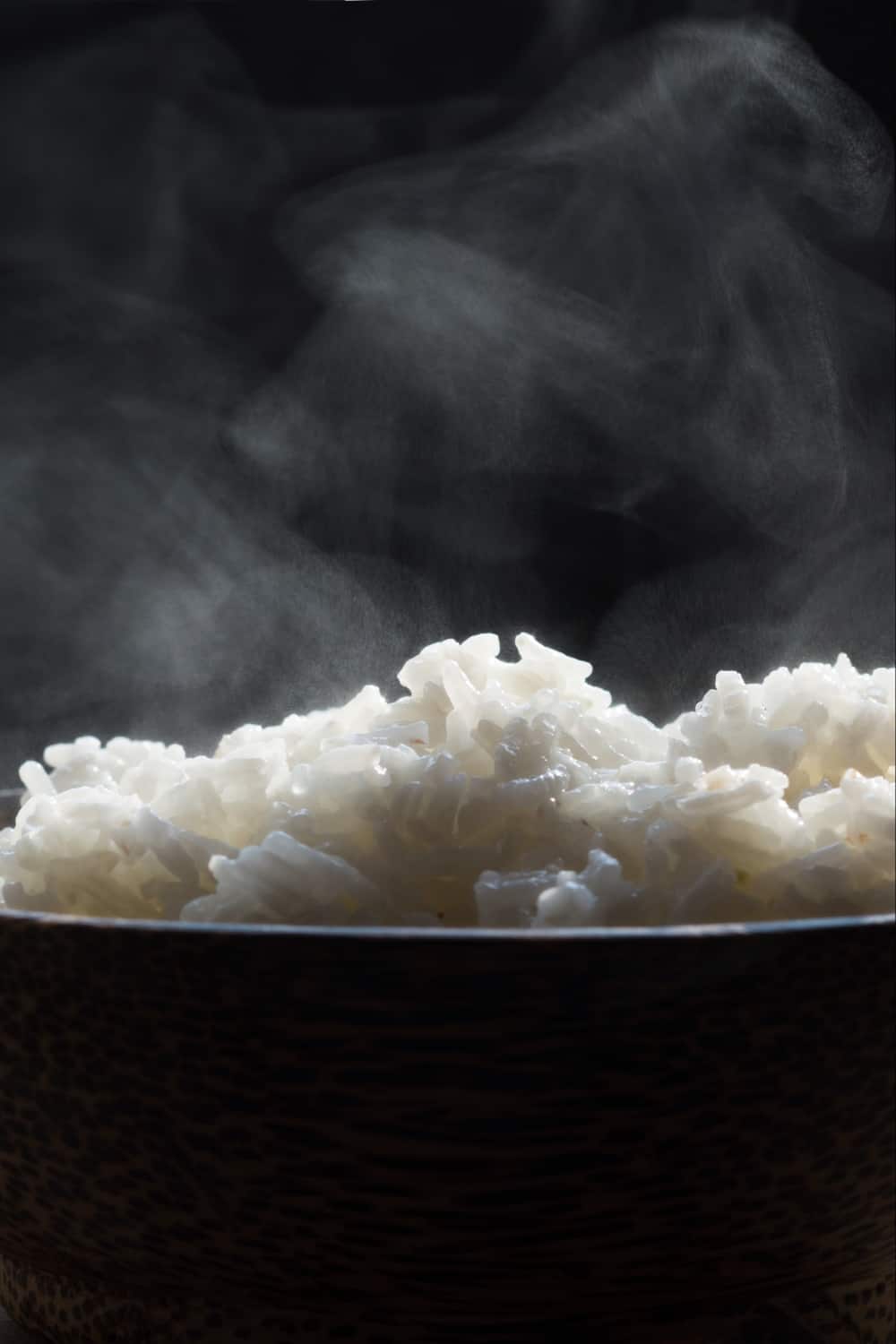
First, let’s get things straight here. As I already said, there are two main kitchen appliances that you can use when cooking your rice, no matter what type you are dealing with. Those appliances are a rice cooker and a saucepan.
If you are using a rice cooker, things should be alright because there won’t be any need to lift the lid whatsoever. So, I always recommend that people use this magical rice device because they can’t go wrong in most cases.
However, if you don’t possess a rice cooker and you are forced to use a saucepan, things are a bit different. When cooking rice in a saucepan, you shouldn’t lift the lid under any circumstances.
The main reason for this is the fact that the needed steam for the cooking process will escape from the saucepan and that will negatively influence the cooking process.
You will be forced to add some water to compensate, but your steamed rice will end up with a wet mixture, i.e. you will get sticky rice and that is something that you want to avoid.
6. Not Letting Your Rice Rest
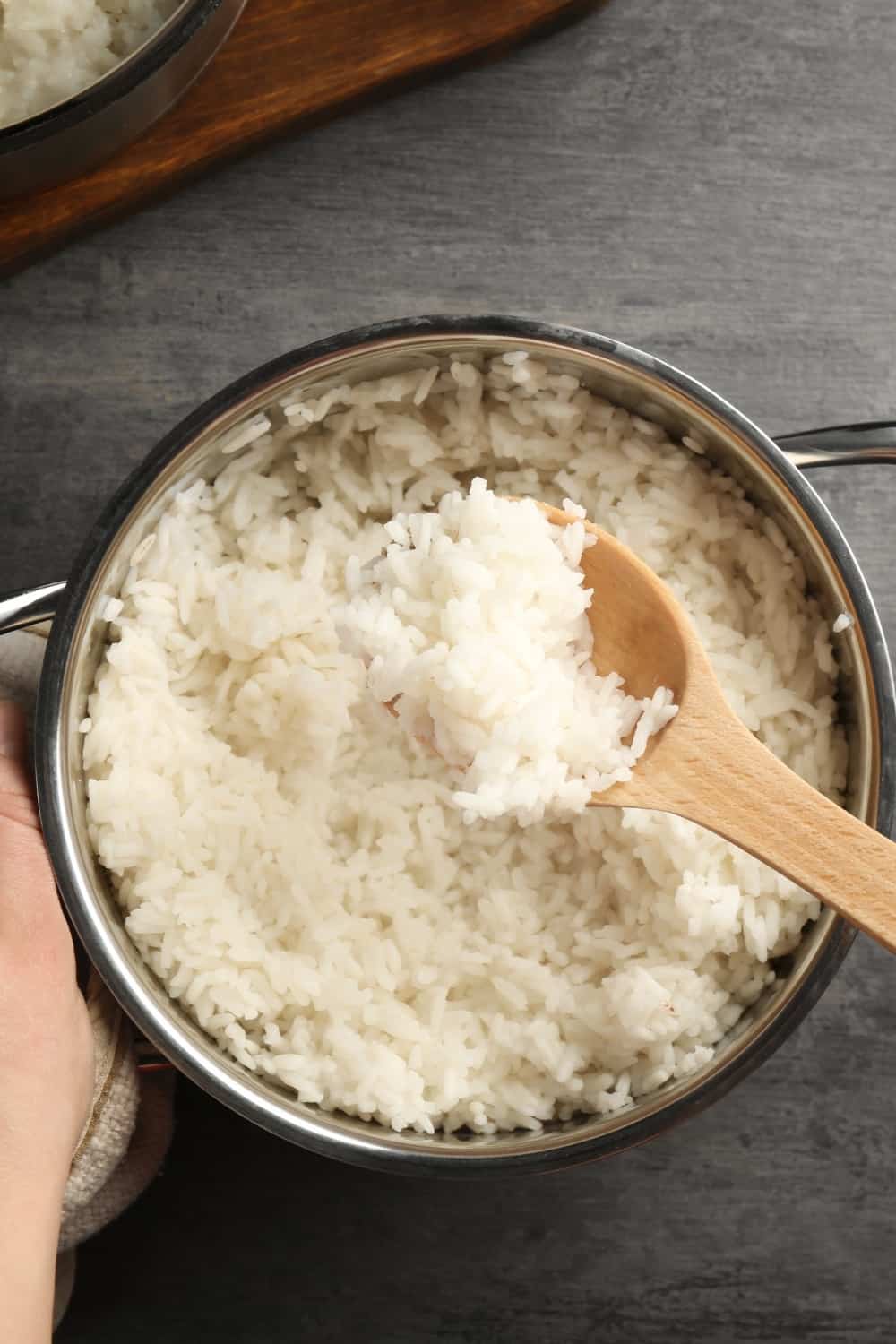
And finally, there is the resting period that all types of rice have to go through. However, many people who are cooking rice don’t even know what “the resting period of rice” is, so they open the lid and they start to use the rice immediately after it absorbs the water.
However, that is not how it should be done. The main reason is the fact that, when you open that pot of rice, your rice is still unevenly cooked, i.e. it is firmer on the top and mushier on the bottom. In order to avoid this, your rice must go through a resting period.
So, when it is done cooking, you have to remove it from the heat, remove the lid, and place a clean, dry folded towel on top of the pot. After placing that folded towel on the top, you will place the lid back.
Wait about 20 minutes for your rice to “rest”. In that resting time, the folded towel will absorb all the excess moisture from the rice and it will be perfectly fluffy and ready for consumption. You should do the same thing before freezing rice krispie treats that you made at home.
How To Fix Sticky Rice?
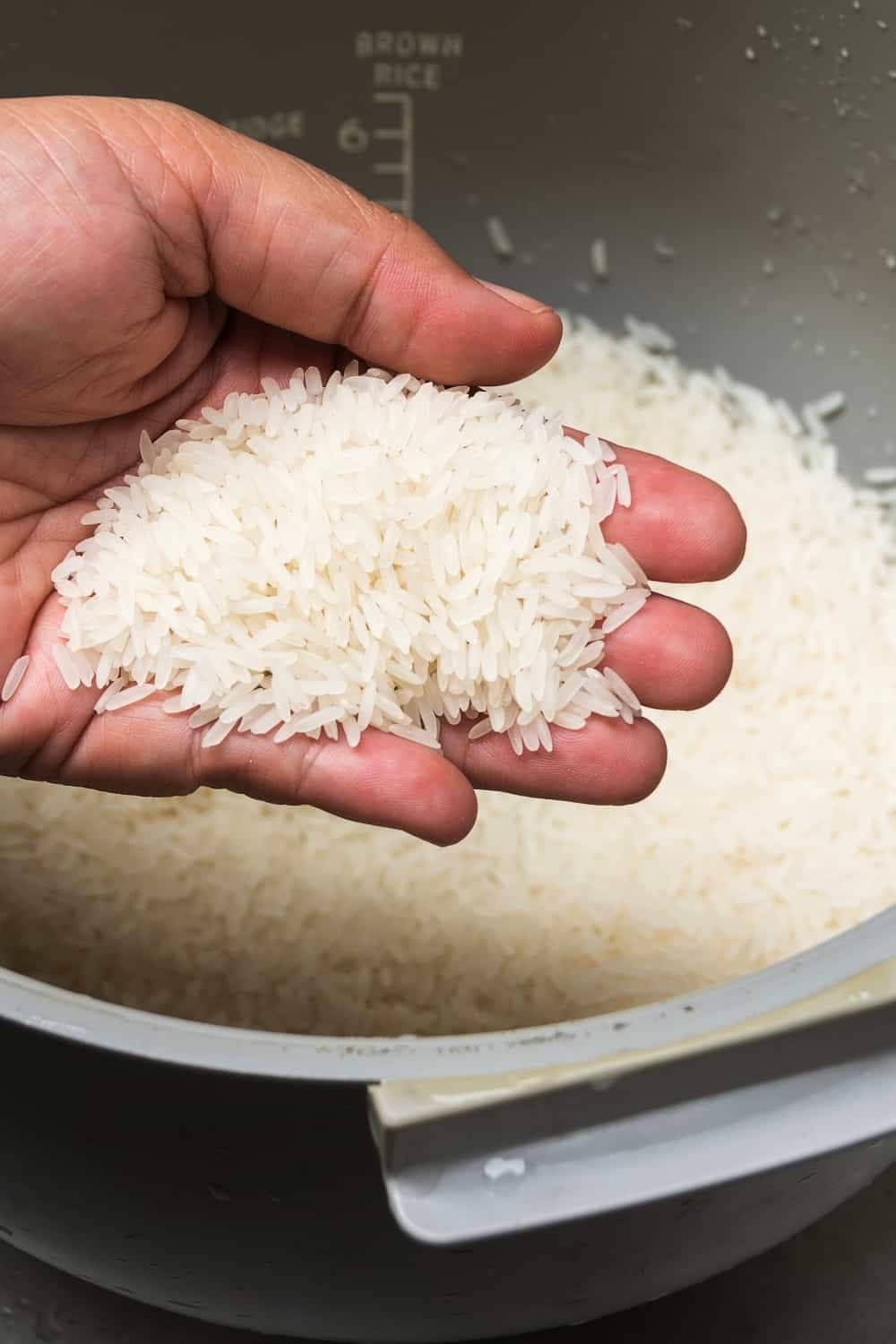
If you eventually ended up with sticky rice, don’t worry. There are a few ways to fix mushy rice. However, you must be aware of the fact that it won’t be the same anymore, but if nothing happens, you won’t have to throw it away. So, how to make rice less sticky? Here are the tricks.
• The first thing that many people recommend when you want to fix sticky rice, is adding some kind of fat. You can add oil, butter, or ghee to do the trick. That added fat will grease the grains of rice and allow them to separate.
• Another great thing that you can do in order to fix sticky rice is to put it in the fridge. The cool temperature will harden your rice, leaving it with a better texture. Although the texture won’t be as great as it was before the cooking process, it will still be edible.
• You can also drain and rinse your rice with cold water. That way, you will surely remove any excess starch and you will solve the problem of glutinous rice.
• If you want to dry your rice and solve the problem of stickiness, it is best to dry it in the oven. All you have to do is to spread the rice evenly on the baking sheet and heat it at 350 degrees F for about 10 minutes. Do not use high heat because your rice will burn eventually.
• If your rice is too mushy and you don’t believe that you can fix it that easily, you can make something else from it in order to avoid throwing it in the trash. So, you can make a creamy risotto from sticky rice, as well as rice pudding, fried rice, or savory congee.
FAQs
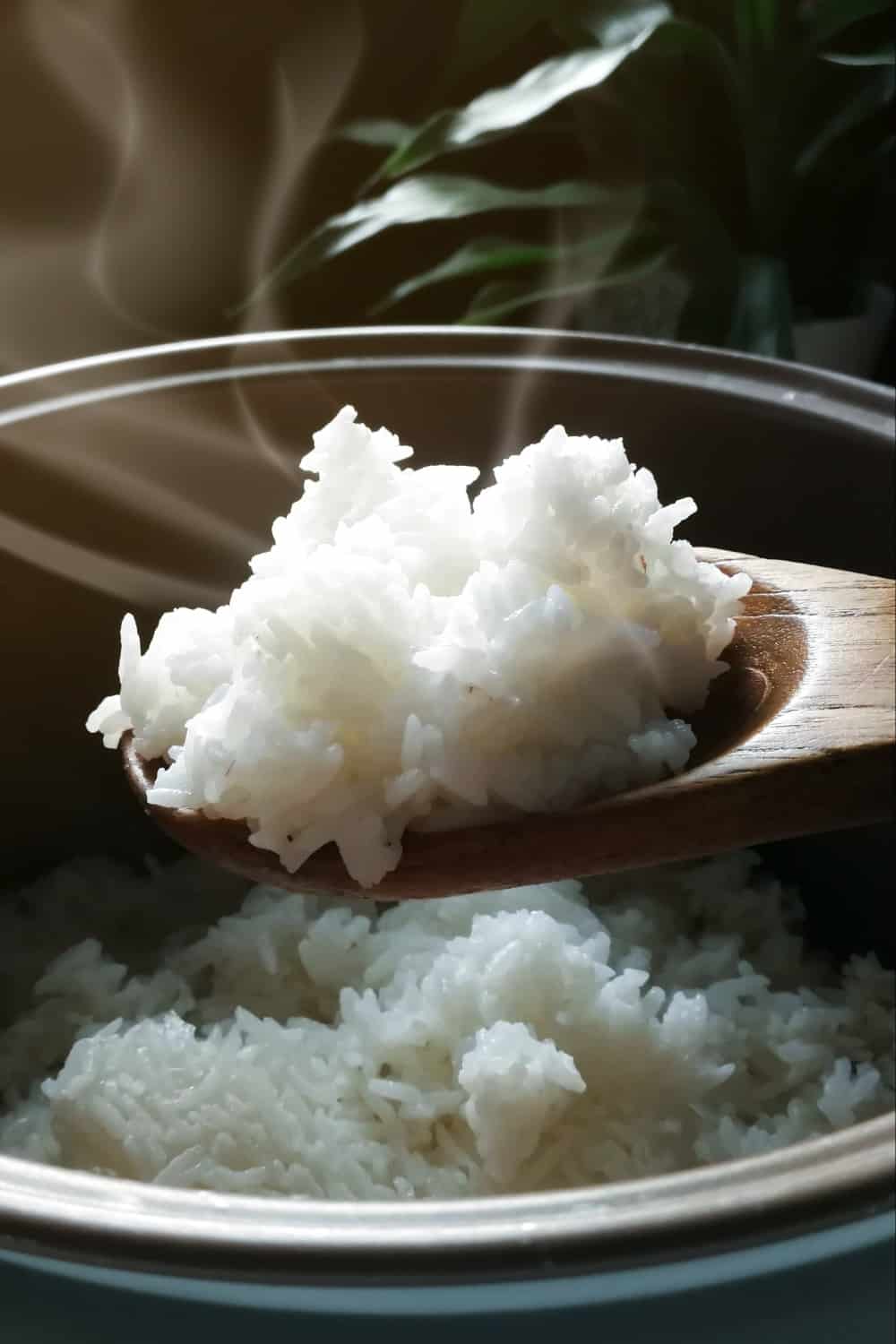
How To Keep Rice From Being Sticky?
There are a few ways to keep your rice from being sticky. First, it is best to use a rice cooker because it is the best cooking appliance for rice. Always rinse rice to release it from excess starch.
Learn what is the right amount of water for every type of rice and the cooking method in order to keep your rice fluffy. And, finally, after the cooking process, let your rice “rest” for 15-20 minutes and then you can enjoy it.
Why Does My Rice Stick To The Pot?
The main reason why your rice grains become sticky and stick to the bottom is the excess starch that causes stickiness in the boiling water.
In order to avoid this, it is very important to rinse your starchy rice before the cooking process to get rid of excess starch.
How To Fix Gummy Rice?
There are a few ways to fix gummy rice. You can put it in the fridge to harden. You can drain it and rinse it using cold water. And, you can also put it in the oven and heat it on low/medium heat for about 10 minutes.
Why Does My Rice Come Out Hard?
There are a few common reasons why your rice is hard.
1. You removed the lid too early.
2. You added too little water.
3. You didn’t let your rice “rest” for 15-20 minutes.
4. You cooked rice on a very high heat.
5. You didn’t cook the rice long enough.
What Is The Best Way To Get Rid Of Stickiness?
If your rice is sticky, the best way to get rid of stickiness is to put it in the fridge and let the cool temperature harden your rice. The texture of rice won’t be perfect, but it will still be better than that mushy texture.
Bottom Line
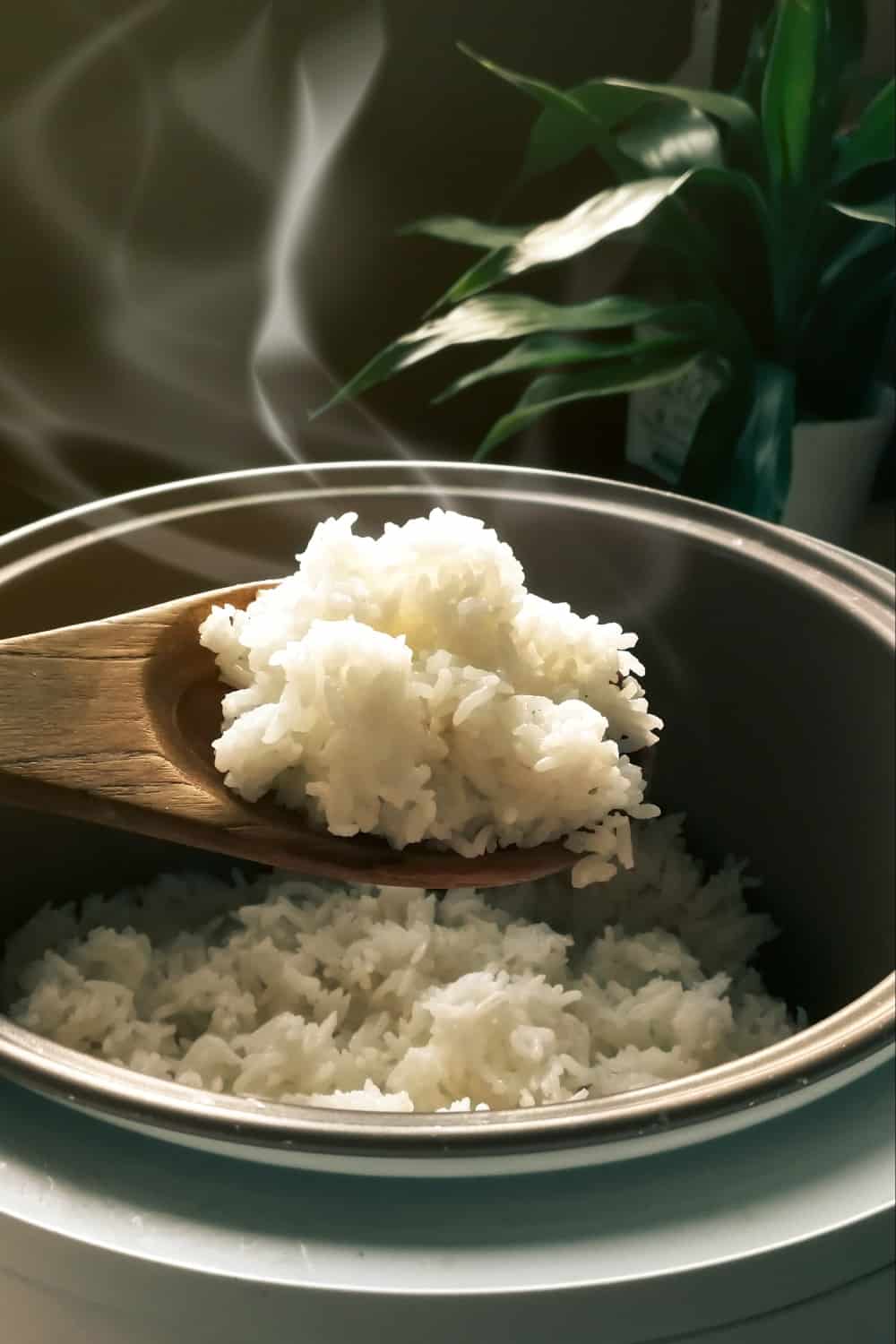
Whether you are dealing with white rice, sushi rice, jasmine rice, or basmati rice, you must know how to properly handle those little healthy grains.
One of the most frequently asked questions related to cooking rice is “Why is my rice sticky?”. So, what is the thing that makes your rice too sticky or that makes your rice too mushy?
In this article, I stated 6 main causes of sticky rice and I also explained the best ways to fix sticky rice so that you can’t complain anymore With phrases like “My rice is mushy, I don’t know what to do.”
